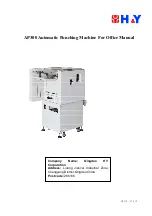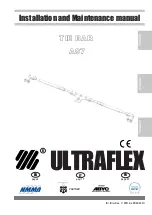
5
10545100-Australia Rev.
– 08/2018
INTENDED USE: FLOWMETER FOR ANALGESIA DELIVERY SYSTEM
The DIGITAL MDM mixer and accessories are analgesia gas mixing and delivery devices for use in medical procedures to
relieve pain and anxiety. The devices permit the trained operator to adjust the percent of oxygen through a range of 100%
to 30% (and thereby control the ratio of oxygen to nitrous oxide). The operator can also control the total volume of mixed
gas up to 9.9 liters per minute.
The Digital MDM Mixer may be used by a properly trained attending physician, dentist, or licensed professional provided
they monitor the patient and themselves for any evidence of contraindications as stated in section titled Side effects and
Contraindications on page 11.
Nitrous Oxide should not be used in the following circumstances, this includes but is not limited to:
•
Treatments that require a level of sedation greater than relative analgesia i.e. anaesthesia
•
Patients who have maxillofacial injuries
•
Patients who have a B12 deficiency
•
Patients who have intracranial or intraocular pressure
•
Treatments that require more than 24 hours of application.
Continuous Flow Systems
The Digital MDM Mixer continuous flow nitrous oxide and oxygen sedation system offers built in fail-safe mechanisms to
prevent the flow of nitrous oxide without oxygen. All flowmeters feature easy adjustment of both flow rates and percentage
N
2
O mixture (0-70%) allowing for predictable results across a wide variety of applications.
The Digital MDM Mixer delivers a continuous flow of gas and must be used with scavenging breathing circuits and/or
scavenging interface devices.
Note: When used in any application gas may disperse to room air creating a potential exposure risk to Nitrous Oxide. A
risk assessment should be conducted by facilities to assess exposure hazards and appropriate mitigation measures; eg:
Adequate ventilation and N
2
O monitoring. (See: Room Ventilation on page 4)
Breathing Circuits
Breathing circuits that can be used with any Porter and Matrx device include:
•
Porter “double mask” autoclavable nasal hood breathing circuit
•
Matrx by Parker Scavenging Nasal Mask breathing circuit with disposable or autoclavable nasal hoods
•
Porter Silhouette disposable nasal hood and breathing circuit
•
Porter Disposable medical breathing circuit with mask
Various breathing circuits that may be used with Porter and Matrx devices must meet several criteria:
•
22mm connection to the bag tee
•
One-way valve (either in the bag tee or breathing circuit) to prevent rebreathing of exhalations
•
Connection from the bag tee to a mask or nasal hood that the patient can comfortably wear or hold in place and
achieve a proper seal
•
Tubing or hose from the breathing circuit that can connect to a scavenging interface (19mm) and allow for adequate
vacuum flow to wall evacuation system
Gas Supply Connection
After installation of the flowmeter, connect the nitrous oxide and oxide supply lines to the Sleeve Indexed System (SIS)
fittings located on the back of the flowmeter unit. It is important that the regulators for both gases be set to give pressures
in the range of 365.4 kPa ± 13.7 kPa. Confirm the absence of leaks at pressure connections on the unit (hose ends). A leak
test using a soap/water solution can be used to determine if there is a leak. If there is a leak, soap bubbles will appear at
the leaking location. Refer to FM-
916 Mobile “E” cylinder Stand Installation and Instructions for connecting gas supply to
the flow meter and cylinder installation to mobile stand.
User Responsibility
This product should not be repaired other than in accordance with written instructions provided by Matrx by Parker. The
user of this product shall have the sole responsibility for any malfunction which results from improper use, faulty
maintenance, improper repair, damage, or alteration by anyone other than a Matrx by Parker authorized repairer Air Liquide
Healthcare
. It is the user’s responsibility to ensure that the correct gas, at the correct pressure, is supplied to the fittings at
the rear of the unit.






























